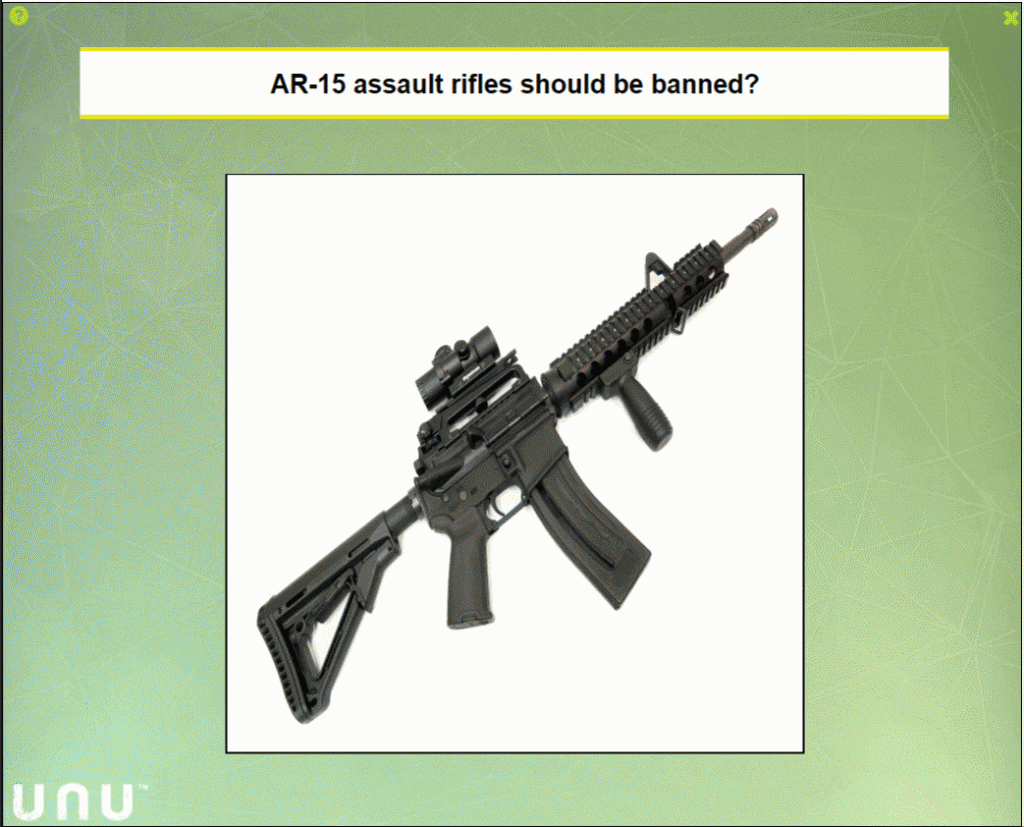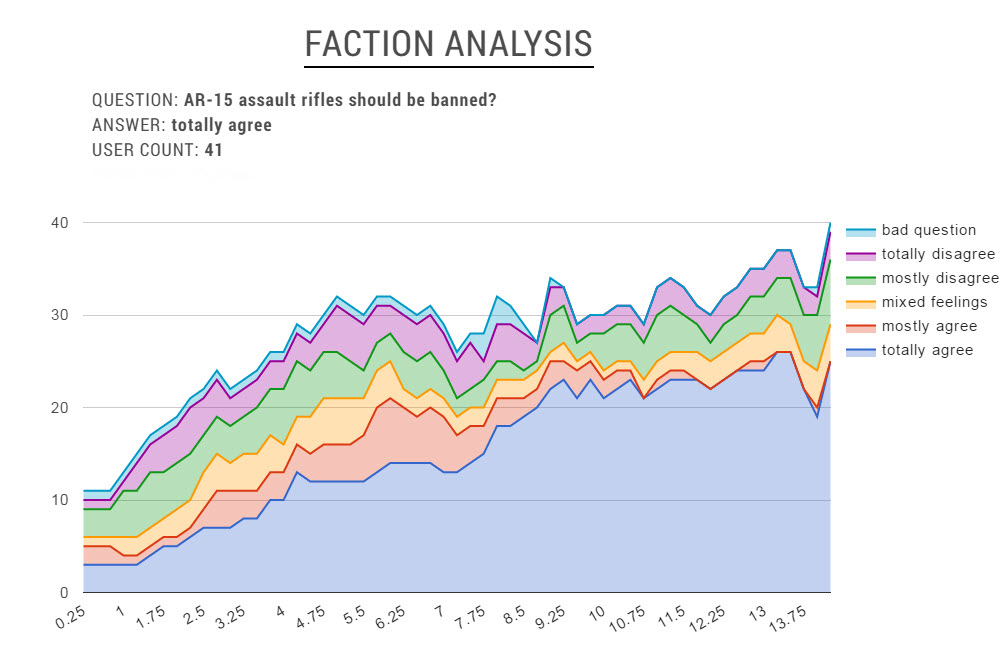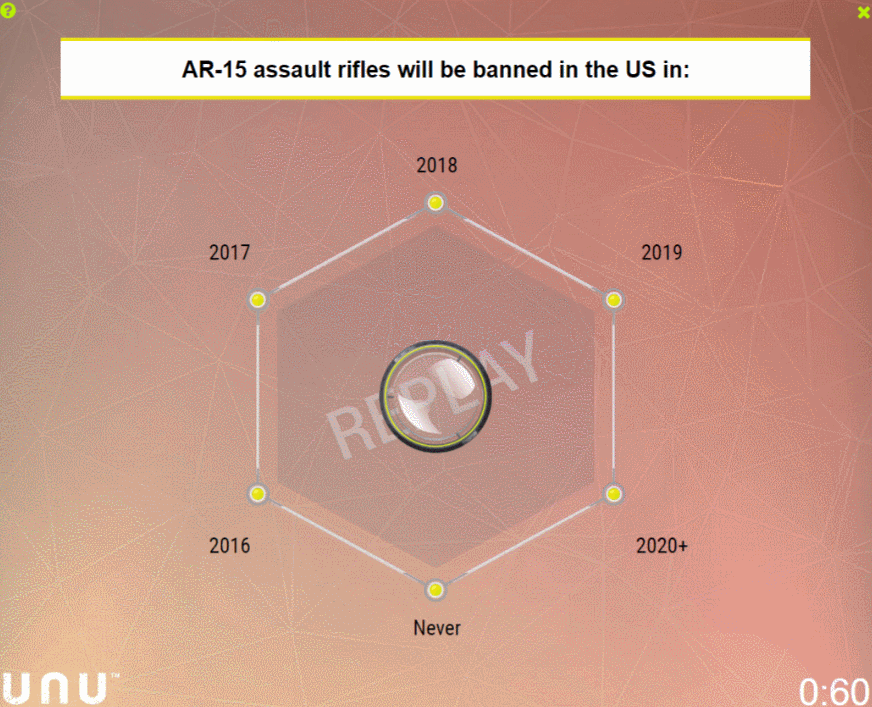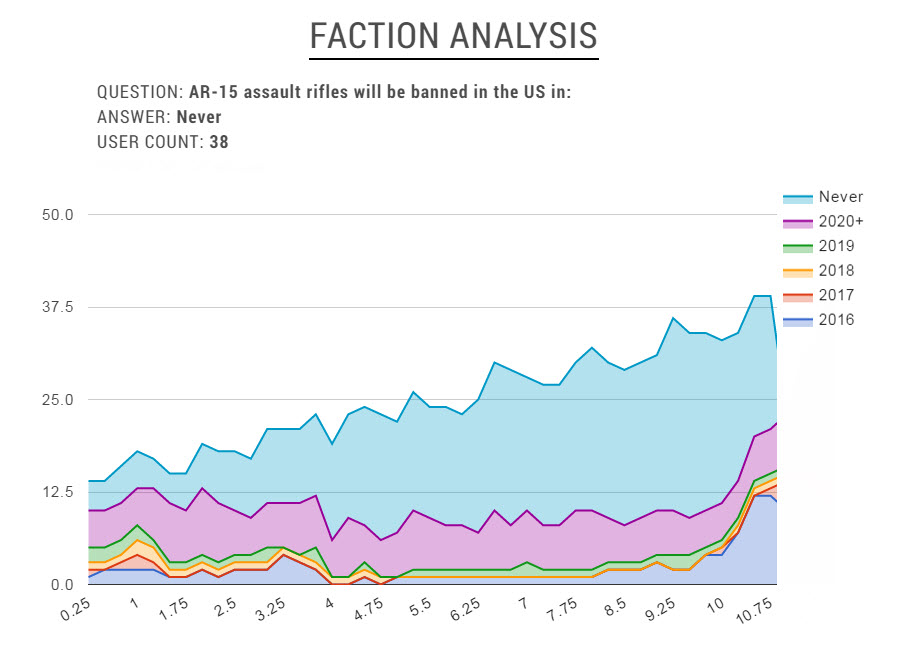
In the wake of the deadliest mass shooting in U.S. history, Americans are once again debating the nation’s gun laws. At the center of the debate is the fact that the Orlando perpetrator, Omar Mateen, used an AR-15 assault rifle that he bought legally, despite the fact that was on a FBI watch list and had a documented history of domestic violence.
Many gun advocates argue that criminals like Marteen will always be able to skirt gun laws and obtain weapons illegally. They conclude, therefore, that gun restrictions will only hurt law-abiding citizens. Opponents ague that Mateen, like most mass-shooters, purchased his weapons legally and that stricter gun laws have limited his firepower or even stopped him. Who is right?
Researchers at Unanimous AI posed these questions to a Swarm Intelligence. The swarm was comprised of 40 randomly selected U.S. citizens from all around the country. They worked together using the UNU swarming platform to answer questions as a unified intelligence. The first question they tackled was direct and to the point — should assault rifles be banned? This is how the swarm responded:
It’s often interesting to perform a Faction Analysis on the swarm data, for it reveals how the participants negotiated over time and ultimately arrived at the final decision. In this case, the initial factions were evenly split among all the options, but support quickly formed for “Totally Agree”. As shown in the graph below, the swarm ultimately reached it’s decision with overwhelming consensus.
The next question asked to the swarm, was – “When would AR-15 assault rifles to be banned in the US?”. As you can see in the animated replay below, the participants were initially split, but quickly converged on an answer that is directly opposed to the assertion the same swarm arrived at above – “NEVER.” In other words, the swarm expressed clear conviction that these weapons should be banned, but also expressed a firm belief that they never will be banned.
As with the swarm result above, researchers performed a Faction Analysis on this data-set, revealing how the participants negotiated over time and arrived at the final decision. In this case, the initial factions had a slight lean towards the longer time-frames, but as the group negotiated by pushing and pulling on the decision-space, they firmly converged firmly upon the assessment that an assault rifle ban would simple never happen.







